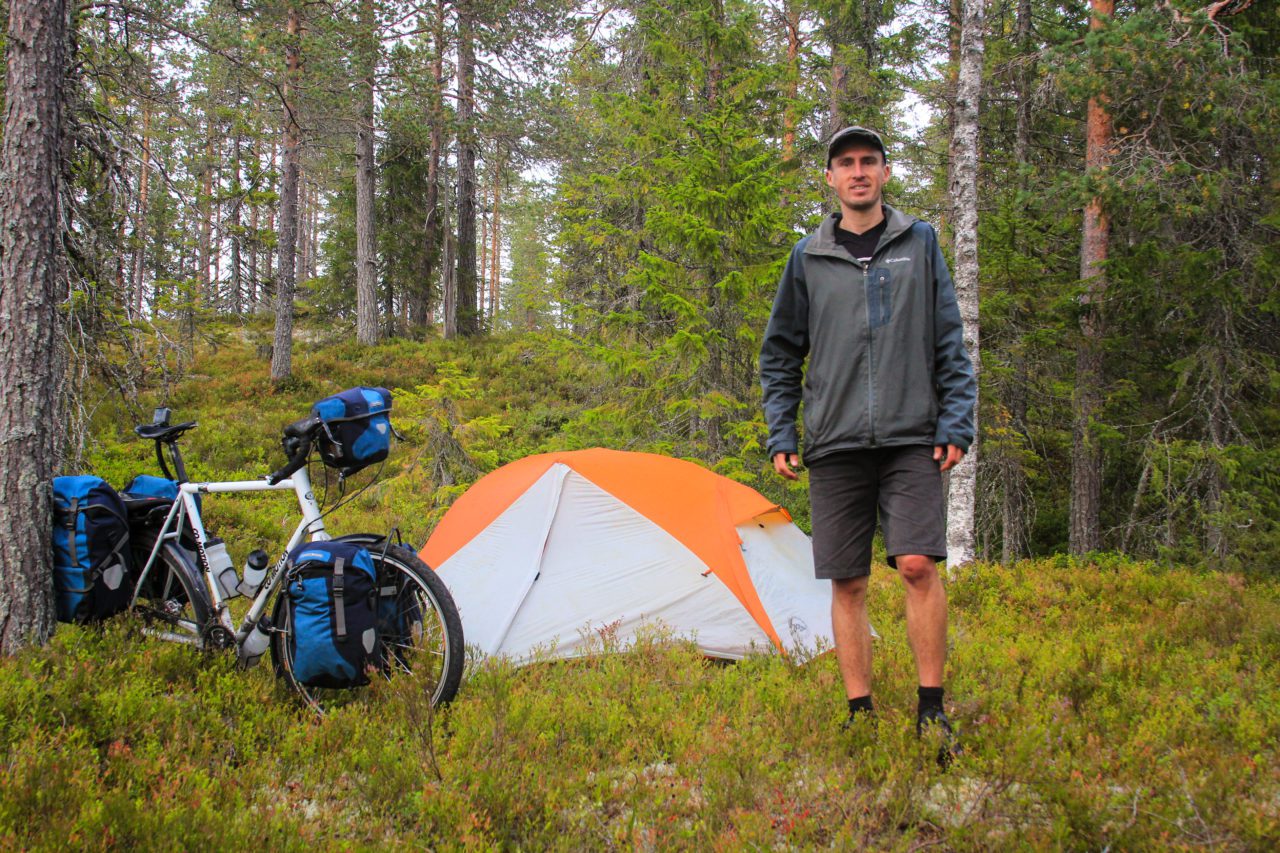Bicycle Touring vs. Bicycle Camping
As I prepare for my epic ride on the Great Divide Mountain Bike Route (GDMBR) I have responded to many contacts from people who would like to join me on this 2,700 mile bike-camping tour. Some of them have had a taste of “credit card” road touring and a few have participated in extensive supported tours, but very few have done any self-supported bicycle touring… and even fewer have bike-camped along the way.
There is a big difference between these two types of touring. Sleeping in hotels and sleeping on the ground at night are two completely different things… and being prepared for a bike-camping expedition is of key importance when traveling a route such as the GDMBR.
I can often detect the unprepared rider by asking them three simple questions:
- The first tip off is when I ask what kind of bike they are planning to use on the GDMBR. Minimally, you need a stout hard tail (front suspension) or even a full suspension (front and rear) bike.
- The second indication of their readiness for such a demanding tour is the type of camping equipment they plan to use. Almost invariably the lighter and more compact it is the happier you will be hauling it over hill and dale.
- And finally, the third question is how they plan to negotiate the sometimes extra heavy load needed for extended periods of unpaved “road” bicycle camping. I am curious to know whether they plan to use a trailer, panniers, frame triangle, seat post bags, or a combination of the aforementioned to handle the extra food and water.
By asking these questions I can get my prospective riding partners to address issues that are specific to the GDMBR (and especially specific to the New Mexico section – which is about 25% of the total 2,700 route).
This takes us back to the original motive for this article, which is to draw some distinctions between bike touring and bike-camping.
Obviously, the first big distinction is that bike touring is primarily on paved roads, whereas bike-camping typically avoids paved roads. In a bike-camping situation, you will find yourself on single-track trails, fire roads, and numerous unpaved surfaces. Therefore, you need a stouter (i.e., heavier) bike for bike-camping.
The second significant difference is the availability of services. On a typical bicycle tour, you will usually have several opportunities each day to resupply your food and water or solicit assistance. But with bike-camping it can be a week or more between opportunities to resupply. If you run out of food, then you go hungry. If you run out of water, then you risk dehydration and could die within a couple of days. Cell phones do work in most places along the GDMBR, but you must be self-sufficient even in an emergency situation. You need to be able to handle most mechanical issues; including, but not limited to, repairing flats.
There are many differences between regular bicycle touring and the strains of bike-camping. One must do their homework, be prepared, and know what they are getting themselves into when planning a bike-camping tour. Planning and preparation are of utmost importance for anyone planning to bike-camp.

